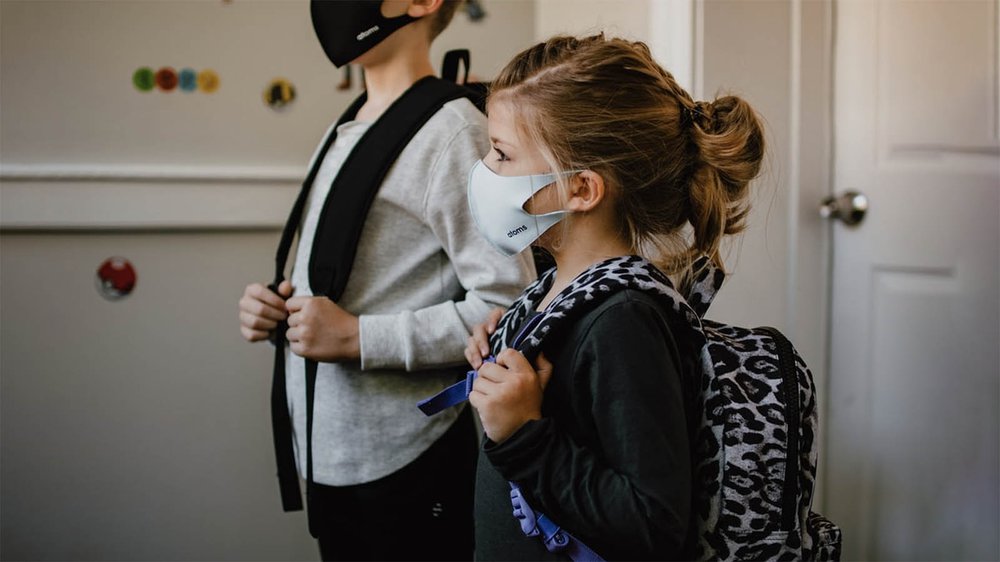“For the past 6 months, policymakers and the U.S. public have weighed economic against public health considerations in debating what limits to set on individuals and collective behaviors in attempting to control the Covid-19 pandemic.”
--The New England Journal of Medicine
America has rarely treated its public schools as an essential service (like police, firemen, sanitation, hospitals and grocery stores). Governments have traditionally underfunded schools particularly those in inner cities and rural areas, those dealing with minority and native American populations and those in poor communities. According to the ASCE (American Society of Civil Engineers), Infrastructure Report Card gives schools a grade of D+. Every school day, nearly 27 million K-6 students and six million adults occupy close to 100,000 public school buildings. The nation continues to underinvest in school facilities, leaving an estimated $38 billion annual gap between what they are given and what they need. As a result, 24 percent of public-school buildings were rated as being in fair or poor condition.
According to the National Center for Educational Statistics (NCES) “In 1998, the average age of America’s Public Schools was 42 years.” Thirty-one percent had “temporary” buildings. Overall conditions were excellent in 6 percent, good in 49 percent, fair in 36 percent and poor in 9 percent. Some “temporary” buildings lack heat, air-conditioning and even toilets. According to Education Week, “42 percent of America’s Public Schools lacked adequate air conditioning.” How can children learn, and teachers teach in 2020 in non-air-conditioned or properly heated buildings or buildings without adequate air filtration systems? There are 5 public schools in West Virginia and 4 in Cumberland, Maryland that are heated with coal. According to the National Air Filtration Association, “53 million school children and 6 million teachers, administrators and others walk into 120,000 school buildings every day – at least 50percent of these schools have been diagnosed with indoor air quality problems. The American Lung Association’s statistics show that asthma is the leading cause of school absenteeism due to chronic illness. And the Centers for Disease Control and Prevention estimates approximately 14 Million school days per year lost because of asthma exacerbated by poor indoor air quality in schools.
Part of the responsibility of our Executive Branch is to create national educational policy and provide the resources necessary to achieve them. Past administrations have failed in both functions. They have failed to consult with local authorities, mayors, school boards and unions. They have failed to consult those responsible for implementing those policies – teachers and school administrators. A recent poll of school leaders found that just 35 percent of elementary school principals say they know “a lot” about their district’s reopening pre-planning process. Nine percent said they knew nothing about their district plans according to the National Association of Elementary School Principals (NAASP). The White House and The U.S. Secretary of Education have not provided a clear national educational policy only threatening to withhold funding if their directives were not followed. By their inaction, they have left a patchwork of fifty states with fifty reopening plans interpreted by thousands of superintendents and principals with varying degrees of parental and political pressure to fully open schools so that parents can return to work and get the economy moving. Their guidance emphasizes the “critical” importance of opening schools in person. They have not provided clear guidance or safety assurances.
Principals have the responsibility for keeping teachers, students and staff safe. They also have the responsibility of ensuring that teachers have the knowledge to deliver high-quality instruction. Students and teachers must also be provided with computers and Internet access both in schools an at home and that the access Schools can only be closed if there was “widespread virus transmission.” A lack of personnel in the schools, unaddressed safety concerns, faulty and inadequate instructions models, antiquated air circulation. The “wrong” decision will result in school staff member and children dying.
The American Academy of Pediatrics addressed the physical, social and emotional risk to children of school closures and also talked about learning loss and food security issues. They said schools should reopen only when safe. This has produced a patchwork quilt of a variety of statewide policies. On one side of the scale, continuing an economic recovery, on the other side the safety of students and staffs.
I am trying to reconcile why America has the money to bail out airlines, car manufacturers and big businesses but lacks the capacity to air condition schools or stop heating buildings with coal making it difficult for children to learn. Some states have spent monies they do not have and are considering cutting the number of teachers.
How can the government afford to bail out Kanye West’s Yeezy sneaker company for $2 million dollars or a loan to the Girls Scouts between $2 and $5 million (both through the PPP loan program) but not have enough money to bail out our public schools?
States have burned through money in order to prevent the spread of the virus. New York City has a $9 billion deficit this fiscal year and projects serious deficits over the next few years, resulting in teacher layoffs, unemployment, a loss of services, a dramatic increase in homelessness. While the contagion rate (the number of positive tests) remains low in New York City, it is surging in states across the country.
Schools provide things other than education. They feed 30 million children daily. They provide socialization skills. Vaccination rates for various dangerous diseases, typically required before students can attend school, have plummeted. Isolating children from their peers exacts social and emotional costs, which differ by age group and are nearly impossible to quantify. By reopening, schools will allow parents to go back to work will increase tax revenues and lower the impact of municipal and state deficits. I know that schools need to reopen. But they need to do so – SAFELY – insuring the health and safety of students, staff and educators and communities.
About the author

Franklin P. Schargel is a former classroom teacher, school counselor and school administrator who successfully designed, developed and helped implement a process that: dramatically increased parental engagement, increased post-secondary school attendance and significantly lowered his Title 1 high school’s dropout rate. The U.S. Department of Education, Business Week, Fortune Magazine, National Public Radio (NPR) the Public Broadcasting System (PBS) and The New York Times have recognized his work. In addition, Schargel served as the Education Division Chair of the American Society for Quality and helped develop the National Quality Award, the Malcolm Baldridge Award for Education.
Schargel is an internationally recognized speaker, trainer and author of thirteen best-selling books. His last published book: “Creating Safe Schools: A Guide for School Leaders, Classroom Teachers, Counselors and Parents” has been published internationally by Francis and Taylor, LLC. In addition, he has written over 100 published articles dealing with school reform.











